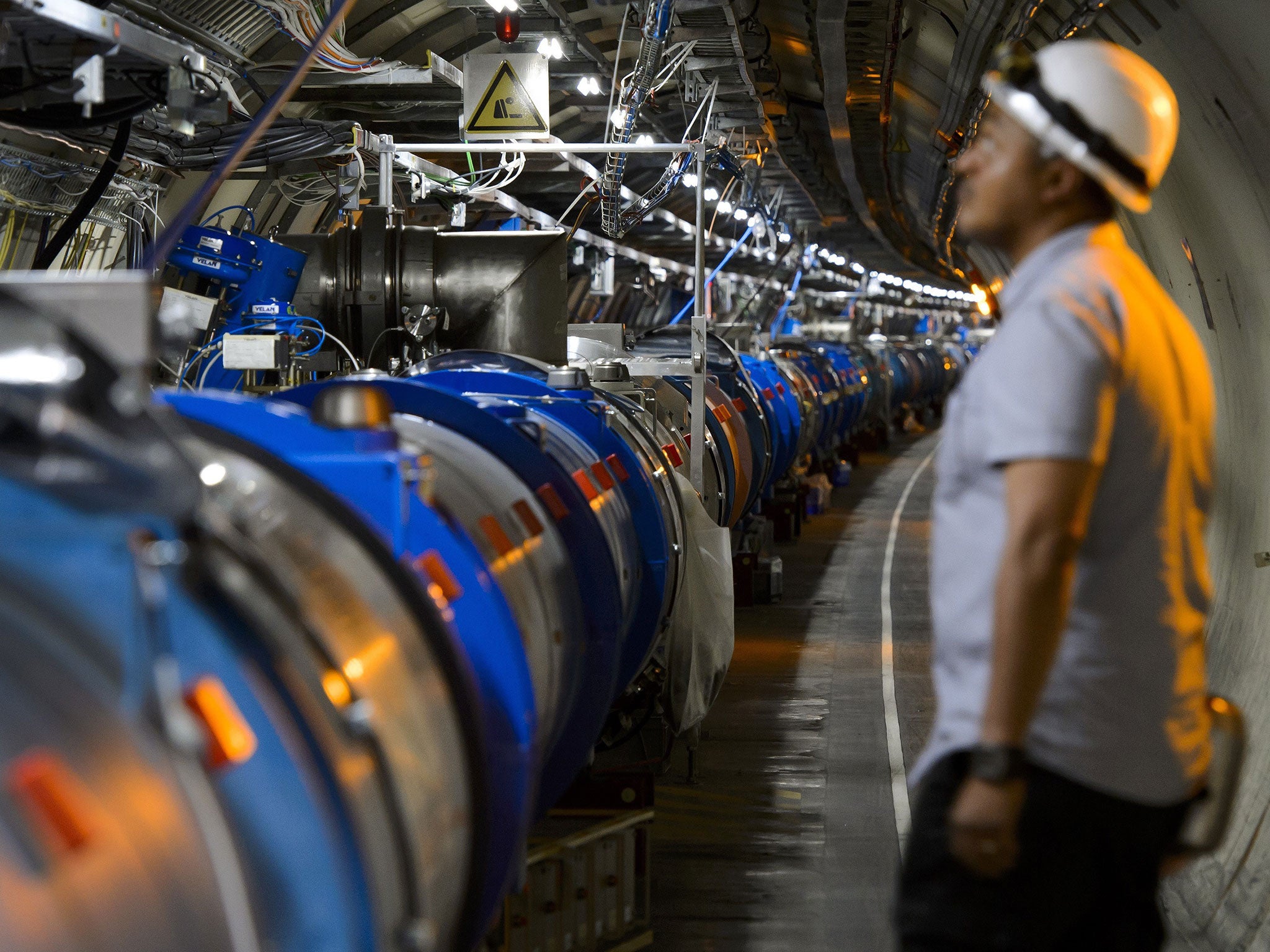Hadron collider set for triumph ‘bigger than Higgs boson’
An upgrade will allow the particle accelerator to work at even higher energies than were used for the discovery of the Higgs boson

A sub-atomic particle even more stunning that the Higgs boson could be discovered this year according to scientists working on the Large Hadron Collider (LHC) at Cern.
The particle accelerator, which has been shut for maintenance, will restart this spring following an upgrade that will allow it to work at even higher energies than were used for the discovery of the Higgs boson, a fundamental sub-atomic particle that accounts for gravitational attraction.
Cern scientists said that the higher energies mean they stand a good chance of discovering supersymmetry, the sub-atomic particles that are symmetrical “twins” of the particles that form the basis of matter.
The first supersymmetry particle is likely to be something called a gluino, the symmetric twin of a gluon particle. If the discovery is made it would represent a milestone in the search for the so-called “dark matter” of the Universe, which cannot be seen but is felt by its gravitational force.
“It could be as early as this year. Summer may be a bit hard but late summer maybe, if we’re really lucky,” said Professor Beate Heinemann of the University of California at Berkeley, who works on the the Atlas experiment, one of the large particle detectors attached to the Large Hadron Collider. “This would rock the world... For me, it’s more exciting than the Higgs,” she told reporters at the American Association for the Advancement of Science in San Jose.
Much of the Universe is composed of invisible dark matter. Scientists believe it consists of sub-atomic particles that have so far defied detection, and are excited about the possibility of discovering a missing universe of sub-atomic particles if the theoretical prediction of supersymmetry is confirmed by experiments.
“We know that there is more than meets the eye. Just 5 per cent [of the Universe] is visible, with rest being Dark Matter and Dark Energy,” she said.
Join our commenting forum
Join thought-provoking conversations, follow other Independent readers and see their replies
Comments
Bookmark popover
Removed from bookmarks